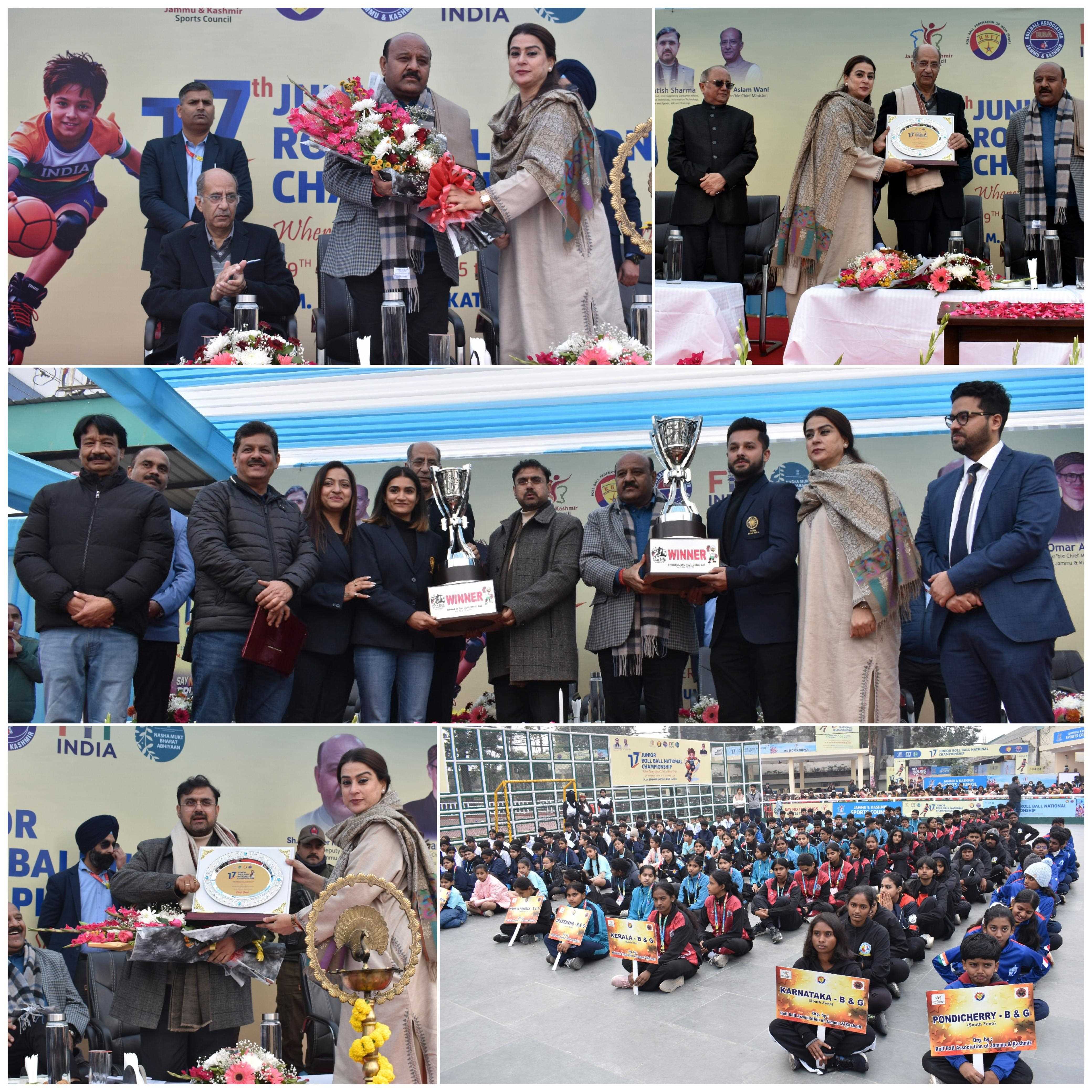The Kashmir Valley, renowned for its breathtaking beauty and abundant natural resources, is currently grappling with a severe water crisis exacerbated by climate change. The region, which once enjoyed a reliable and plentiful supply of water from its rivers, springs, and wells, now faces significant challenges in meeting the water demands of its population and agricultural sector.
Prolonged Dry Spell
It has been almost two months since the last significant rainfall occurred in the Kashmir Valley. This prolonged dry spell has further strained the already stressed water resources, leading to severe consequences for both the environment and the local population.
Low Water Level of River Jhelum
The River Jhelum, historically the lifeline of the Kashmir Valley, has seen a significant decline in its water levels. The river’s flow, which is crucial for both irrigation and drinking water, has been reduced due to decreased snowfall, glacier melt, and changing precipitation patterns caused by climate change. The low water level not only diminishes the availability of water but also disrupts the river’s ability to sustain the valley’s ecosystem and agricultural activities.
Reduced Discharge in Wells
Wells, a traditional source of water for many communities in the valley, are facing unprecedented challenges. Prolonged dry weather has led to a significant drop in the groundwater table, resulting in less discharge from these wells. Over-extraction of groundwater for agricultural and domestic purposes further exacerbates this issue, making it increasingly difficult to sustain the water supply from wells.
Declining Groundwater Table
The prolonged dry spells in the Kashmir Valley have caused a noticeable decline in the groundwater table. Reduced rainfall, coupled with over-extraction and insufficient recharge, has led to a sharp drop in groundwater levels. This decline is alarming as groundwater is a critical resource for both drinking water and irrigation, and its depletion poses a long-term threat to water security in the region.
Pollution in Water Bodies
Water pollution is an escalating issue in the Kashmir Valley, further aggravating the water crisis. Industrial effluents, agricultural runoff, and domestic waste are contaminating rivers, lakes, and other water bodies. The increasing pollution levels not only degrade the quality of water but also make it unsuitable for drinking and irrigation, posing severe health risks and affecting agricultural productivity.
Illegal Land Mining in Water Bodies
Illegal land mining activities in the Kashmir Valley have become a significant concern. These activities, often carried out in riverbeds and other water bodies, disrupt the natural flow of water, reduce water retention capacity, and cause sedimentation. The consequences are detrimental, leading to the degradation of aquatic habitats and further reducing the availability of clean water for human and agricultural use.
Less Discharge in Springs
Springs, which have been a reliable source of fresh water for centuries, are also witnessing reduced discharge. Climate change-induced variations in precipitation and temperature are disrupting the hydrological cycle, leading to a decline in spring discharge. This, in turn, affects the availability of water for drinking and irrigation, putting additional pressure on other already stressed water sources.
Illegal Use of Drinking Water
The illegal use of drinking water for irrigation, washing cars, and other non-essential activities is exacerbating the water crisis in the Kashmir Valley. This misuse not only depletes the limited supply of potable water but also places unnecessary strain on water resources that are already under severe stress. Addressing this issue requires stringent enforcement of regulations and widespread public awareness about the importance of conserving drinking water.
Impact on Drinking Water and Agriculture
The diminishing water resources in the Kashmir Valley have far-reaching consequences for both drinking water supply and agricultural activities. Drinking Water Scarcity: The decline in water levels in rivers, wells, and springs has led to a severe scarcity of drinking water. Many communities now rely on distant and less reliable sources, resulting in increased hardship, especially during the dry season. The scarcity of clean drinking water also poses significant health risks, particularly in rural areas where access to alternative sources is limited.
Impact on Horticulture and Agriculture: Agriculture, the backbone of the valley’s economy, is heavily dependent on a consistent supply of water. The reduction in water availability has led to decreased crop yields, affecting the livelihoods of farmers. Horticultural activities, particularly the cultivation of apples and other fruits, are also suffering due to insufficient irrigation. This not only impacts local food security but also the region’s economic stability.
Future Generations and Water Crisis
If the current trends continue and no preventative measures are taken, future generations in the Kashmir Valley will face severe consequences:
Increased Water Scarcity: Future generations will likely experience even more severe water shortages, affecting their daily lives and overall quality of life. Access to clean drinking water may become a privilege rather than a basic right.
Declining Agricultural Productivity: The agricultural sector, which is a major source of livelihood for many in the valley, will suffer. Reduced water availability will lead to lower crop yields and may force many to abandon farming altogether, impacting food security and economic stability.
Health Risks: Water scarcity and pollution will lead to increased health risks, including waterborne diseases. The lack of clean water for drinking and sanitation will have severe implications for public health.
Economic Consequences: The water crisis will have broad economic repercussions, affecting not just agriculture but also other sectors dependent on water. This will lead to increased poverty and hinder overall development in the region.
Solutions
Addressing the water crisis in the Kashmir Valley requires a multifaceted approach that includes both short-term and long-term measures. Here are some potential solutions:
Judicious Use of Drinking Water
Promoting the judicious use of drinking water among the local population is crucial. This can be achieved through awareness campaigns, encouraging water-saving practices, and implementing water-efficient technologies. Every drop of water saved can contribute to alleviating the crisis.
Adhering to Directions Issued by Authorities
It is essential for the local population to adhere to the guidelines issued by authorities. These guidelines aim to conserve water and manage its use more efficiently, including following water rationing schedules, using water-saving devices, and participating in community water management initiatives.
Rainwater Harvesting
Implementing rainwater harvesting systems can help augment the water supply by capturing and storing rainwater. This water can be used for various purposes, reducing reliance on traditional sources that are under stress.
Recharging Groundwater
Enhancing groundwater recharge through the construction of check dams, percolation ponds, and other structures that facilitate the infiltration of rainwater into the ground is vital. These measures can help replenish the groundwater table and ensure a more sustainable water supply.
Sustainable Agricultural Practices: Promoting sustainable agricultural practices, such as drip irrigation, can significantly reduce water consumption in the agricultural sector. Additionally, encouraging the cultivation of drought-resistant crops can help farmers adapt to changing water availability.
Pollution Control Measures
Implementing stringent pollution control measures to prevent industrial, agricultural, and domestic waste from contaminating water bodies is essential. Effective waste management practices, along with regular monitoring and enforcement, can help protect water quality and ensure the availability of clean water.
Regulating Illegal Mining Activities
Strictly regulating and monitoring illegal mining activities in water bodies is crucial to prevent further degradation of water resources. Authorities must enforce laws and take punitive actions against those involved in illegal mining to protect the natural flow and quality of water.
Preventing Illegal Use of Drinking Water
Stringent measures should be taken to prevent the illegal use of drinking water for non-essential activities such as irrigation and washing cars. Public awareness campaigns and strict enforcement of regulations are necessary to ensure that potable water is used only for essential purposes.
Government Initiatives
The government has launched several initiatives to address the water crisis in the Kashmir Valley:
Jal Jeevan Mission (JJM)
The Jal Jeevan Mission aims to provide tap water connections toevery household in rural areas of the Kashmir Valley. This initiative is a significant step towards ensuring water security for the rural population. The construction of filtration plants, laying of pipes, and other infrastructure developments are in full swing. By the end of October this year, over 90% of the JJM schemes will be inaugurated, promising an end to the water crisis in these villages.
AMRUT Initiative
The Atal Mission for Rejuvenation and Urban Transformation (AMRUT) focuses on urban areas, aiming to develop water structures and improve water supply systems in towns. This initiative is expected to address the water scarcity issues in urban areas, ensuring a consistent and reliable supply of clean water.
Conclusion
The water crisis in the Kashmir Valley, exacerbated by climate change, poses significant challenges to both the environment and the local population. The decline in water levels in rivers, wells, and springs, coupled with pollution and illegal activities, has led to severe water scarcity, affecting drinking water supply and agricultural productivity.
Addressing this crisis requires a collective effort from the government, local authorities, and the community. Judicious use of water, adherence to regulations, and the implementation of sustainable practices are crucial. Initiatives like the Jal Jeevan Mission and AMRUT are promising steps towards ensuring water security for future generations. It is imperative that we take immediate and effective measures to conserve and protect our precious water resources, securing a sustainable future for the Kashmir Valley.
Email:--------------------------mehrajrasool184@gmail.com






